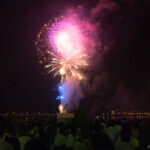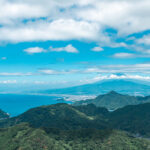This post may contain affiliate links. Please read our disclosure policy.
From Tokyo’s Sumidagawa River to lakeside towns near Mt. Fuji, Japan’s hanabi festivals light up the summer sky with dazzling displays and lively celebrations.

A Tradition of Hanabi in Japan
Every summer between July and September, Japan comes alive with hanabi, meaning “flower fire.” These fireworks festivals, known as Hanabi Taikai, range from small local gatherings to massive shows that launch over 40,000 fireworks. They’re one of the highlights of the season for both locals and visitors.
The tradition dates back to 1733 during the Edo period. After a famine the year before, Shogun Tokugawa Yoshimune hosted a fireworks show along the Sumida River in Tokyo to honor those who had passed. This event became the foundation of today’s Sumidagawa Fireworks Festival, one of the most famous in the country.
What to Expect at a Fireworks Festival

Most hanabi festivals are free to attend, but popular events can get very crowded. Families and friends often arrive hours in advance to claim their spots, spreading picnic mats on the ground. Paid seating is available at major shows, and some cities offer special boat cruises with food and drinks.
Hotels near big festivals often book out months in advance, so plan your accommodations early if you want to stay nearby.
Wearing a Yukata

Many people wear yukata to summer festivals. A yukata is a light cotton kimono worn by both men and women, often paired with wooden sandals and a small drawstring bag called kinchaku. You can rent one in major cities or purchase one at department stores, thrift shops, or summer stalls.
What to Bring

To make the most of your night out, we recommend:
- Arriving early to secure a good spot
- Bringing a mat or towel to sit on
- Using restrooms before the show starts to avoid long lines
- Setting a meeting spot in case of large crowds
- Packing food and drinks for a picnic-style evening
Street Food at the Festival

Food stalls, called yatai, are a big part of the experience. You’ll find classic Japanese festival snacks such as:
- Karaage (fried chicken)
- Yakisoba (fried noodles)
- Takoyaki (octopus balls)
- Kakigori (shaved ice with syrup)
- Grilled meats and seafood
- Cold drinks and beer
Eating while waiting for the show adds to the fun and festive atmosphere.
Our Hanabi Experiences
Lake Kawaguchi Fireworks Festival
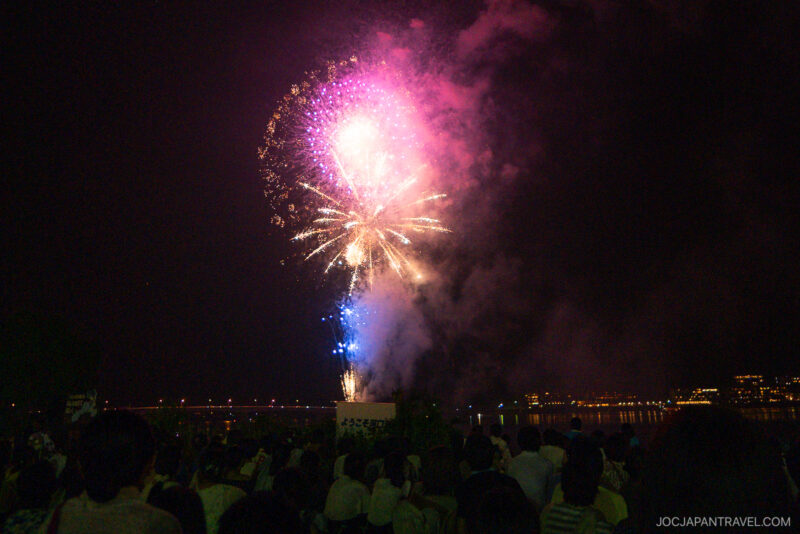
As part of the Mt. Fuji Five Lakes Festival, this event features over 10,000 fireworks launched from the lake. We stayed at a nearby hotel and used the shuttle service to reach the site.
Despite some light rain, the show went on with colorful bursts shaped like hearts and smiley faces. The format included sponsor announcements between rounds, which made the pacing a bit stop-and-go. We left early to avoid the rush back, which worked out well with the kids.
Yokohama Sparkling Twilight
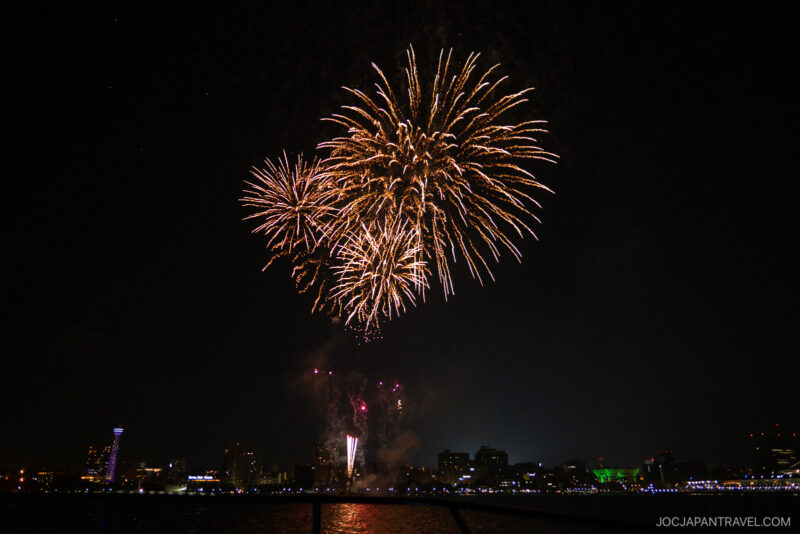
In Yokohama, we reserved boat seats which included a bento dinner and a drink. We set out around 6:30 pm for a short cruise before watching 30 minutes of uninterrupted fireworks from the bow of the boat. Seeing the fireworks explode over the city skyline was unforgettable. Next time, we’d consider sitting along the bayfront for free, but the boat ride gave us a special perspective.
Fireworks in Izunokuni

Our most memorable fireworks experience was in Izunokuni. While the show wasn’t the biggest, our reserved seats along the river gave us an unobstructed view right beneath the action. We were so close that it was hard to take in the entire display at once, but every burst lit up the sky above us. Feeling the rumble of each blast made the show even more thrilling and unforgettable.
Top Fireworks Festivals in Japan
Some of the largest and most well-known hanabi festivals include:
- Sumidagawa Fireworks Festival (Tokyo)
- Nagaoka Festival Grand Fireworks Show (Niigata)
- Tsuchiura All-Japan Fireworks Competition (Ibaraki)
- Omagari Fireworks Competition (Akita)
- Edogawa Fireworks Festival (Tokyo)
- Tenjin Matsuri Fireworks (Osaka)
- Kobe Minato Fireworks (Hyogo)
- Miyajima Water Fireworks (Hiroshima)
- Katsushika Noryo Fireworks Festival (Tokyo)
These festivals are very crowded, so please remember this as you plan to attend.
Are Japan’s Fireworks Festivals Worth Visiting?
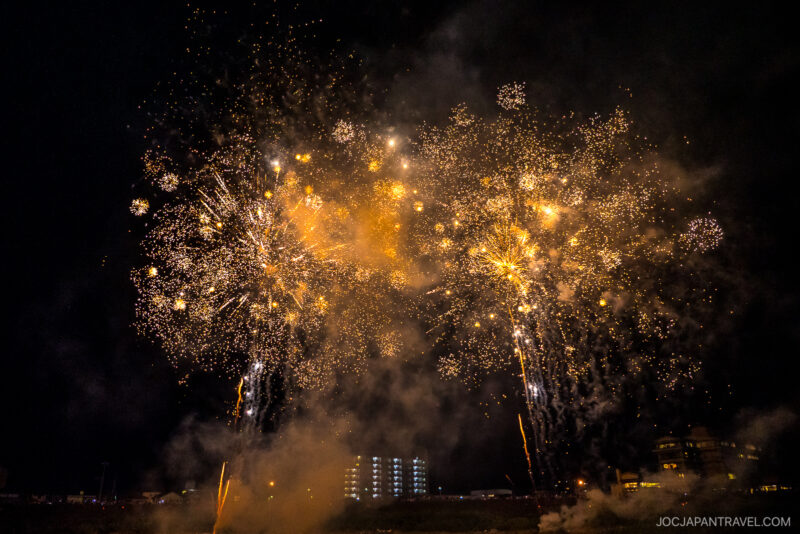
Summer fireworks in Japan are about much more than the fireworks themselves. They bring together history, tradition, and community spirit in a lively celebration.
You can watch from the riverbank, by a lakeside, or even on a boat, and each setting adds its own charm. Hanabi is one of the most memorable experiences of a Japanese summer, and we can’t recommend it enough.
More to Explore Nearby
If you’re planning to attend a major fireworks festival, here are nearby attractions to add to your trip:
- Asakusa – Home to Sensoji Temple and Nakamise Shopping Street, perfect before or after the Sumidagawa Festival
- Mt. Fuji Five Lakes – Combine Lake Kawaguchi fireworks with sightseeing and onsen around the Fuji area
- Yokohama Bay Area – Visit Chinatown, Cup Noodles Museum, and Cosmo World along with the fireworks
- Osaka – Plan for Tenjin Matsuri fireworks along with street processions and shrine rituals

